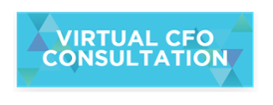If you're a creative agency owner looking to grow your agency, building a lean operations model by streamlining processes will allow you to focus on what is most important to your agency: delivering transformational services for your clients, increasing revenue, and making sure your employees are happy.
Christa Grasso joined us on the Creative Agency Success Show to discuss how to do just that. Read on to learn the steps we discussed.
Eliminate What’s Not Working
To create a lean agency, you first need to prune processes, software, systems, and tasks. Christa put it this way: “It's about eliminating anything that's not adding value to your clients and profit and really focusing on running an operationally efficient and lean agency.” While eliminating these unnecessary steps and software will save you money, eliminating systems, processes, and tasks will give your employees back time in their day that they can instead devote to providing exceptional client services..jpg?width=461&height=288&name=Blog%20Post%20Template%20(2).jpg)
Capture Effective Systems That Are Currently in Place at Your Agency
When an owner establishes an agency, they're typically hands-on and are the primary ones providing services to clients. However, as an agency grows, the owner needs to pass on client delivery tasks to other team members in order to focus on growing the agency. This transition is not always done with recorded processes in place. Also, it can include inefficient steps that are no longer necessary or could be automated.
Christa recommends capturing the processes your team currently follows, especially if your team follows a unique framework or method that is not standard in the creative industry. By recording your processes, you give your agency a better chance at scaling because you can train new incoming employees quickly and efficiently.
After you have recorded the current effective processes, we recommend asking your employees what systems they feel are inefficient. This might be non-chargeable tasks like timesheets, employee education, etc. Or maybe these are processes related to delivering services to clients. AI can be used to automate certain tasks, and you might find based on employee feedback that some steps are not necessary at all. Cleaning up these systems will help your agency deliver results and memorable experiences. Not only will your clients keep coming back leading to increased revenue, but they may refer friends or peers that boost your revenue, as well.
Involving your team is an essential part of this step. Making them a part of this optimization will help them see the impact they have on the agency, improving their buy-in.
Apply the 80-20 Framework
When agency leadership tries to document the processes they have in place, they often aim to capture every single aspect. However, this approach ultimately prevents their staff from applying their skills to the role. Instead of capturing 100% of what a team member does in highly detailed steps, aim to capture only 80% of the steps needed to complete a task by explaining the desired outcome and high-level details.
Leaving space for your team to apply their expertise and make the process their own is important for the growth of not only your employees, but your agency as a whole. Give your team that little bit of room to adapt the system to be more effective for your clients.
Avoid the Growth-Optimization Loop
Slow and steady wins the race. Or, in Christa’s terms, you win the race by avoiding the grow-optimization loop.
Here’s how Christa defines it: “You either feel like you're in a period where you're laser focused on growth, and so everything goes into agency development, marketing and sales, and you're trying to bring in as many clients as you can to hit certain revenue goals. In doing so, you create this mess behind the scenes where you then need to update your systems and your processes, and then you end up in an optimization loop.”
Agency leadership and owners fall into this trap when they attempt to bring on as many clients as possible to grow the agency while not stopping to consider if current processes are built to sustain this growth. Once leaders realize they're overlooking their current processes, they focus solely on creating brand new processes they believe will stop the bleeding. While this sounds like a good idea, it means that the leaders have entirely lost focus on their growth goals. Basically, leadership has created this inefficient back-and-forth game between reaching goals vs. building new processes.
To avoid getting caught in this loop, optimize the processes you already have in place instead of implementing radically different ideas to try and get better results. For example, instead of taking on as many new clients as possible and devising new marketing strategies and processes to accomplish this, look at ways to slightly increase your conversion rates to achieve steady growth without spending resources to establish additional processes. By optimizing what you already have, you will have more time to focus on all agency goals including process optimization and client acquisition.
The steps above should help you create a more efficient and effective operations strategy for your agency. Exceptional client experience, improved client retention, better team engagement, and skyrocketing revenue are all in your future if you take the time to optimize your processes.
You may also find that as an agency owner, you are able to spend more time on tasks that will directly influence the growth of your agency like new service offerings or cross-selling opportunities.
Check out the full podcast episode with all of Christa Grasso’s tips for creating a lean agency.
And if you’d like to learn more about how we’ve helped our clients improve their agency growth, book a free consultation below.
.png?width=120&height=77&name=Summit-Virtual-CFO_color_rgb%20(1).png)














